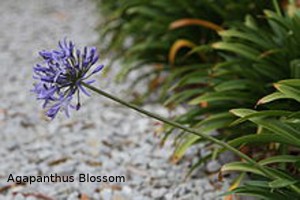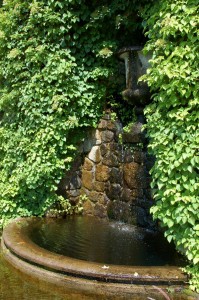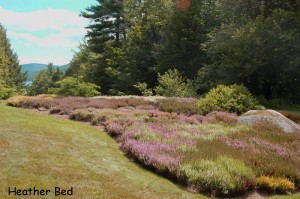Photo gallery
 I couldn’t have picked a more wonderful day to visit The Fells even if it wasn’t the last day of the garden tours for the season. It is certainly easier getting to the Fells now than it was in 1891 when John Hay bought 1,000 acres of farmland to create his lakeside estate In Newbury, New Hampshire.
I couldn’t have picked a more wonderful day to visit The Fells even if it wasn’t the last day of the garden tours for the season. It is certainly easier getting to the Fells now than it was in 1891 when John Hay bought 1,000 acres of farmland to create his lakeside estate In Newbury, New Hampshire.
In those days, you traveled by train to the Lake Sunapee and then took a steamboat to the estate (if you’d been invited). But given the unspoiled landscape and beautiful vistas, I’m sure that was a wonderful start to a relaxing summer retreat after living in Washington D.C as the Hay family did most of the year. It was the exclusive enclave of the Hay family who frequently invited relatives and friends to stay with them during the summer season. Even now traveling by car, there isn’t much in the way of development as you come into to Newbury and you can imagine what it must have been like back then.
History
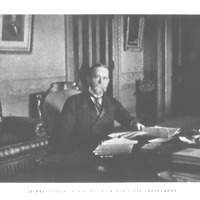 John Milton Hay, born in 1838 to a rural Illinois doctor and his wife Clara, graduated from Brown University and became the assistant private secretary to Abraham Lincoln. He had actually known Lincoln when he was growing up since his uncle’s the law office was next to Lincoln’s before he became president. As one of his private secretaries, he became very close to the president and was at his deathbed after the assassination. After Lincoln’s death, he co-authored a multivolume biography of Lincoln with fellow Lincoln secretary John Nicolay. He went on to serve as ambassador to Great Britain and then Secretary of State under presidents William McKinley and Theodore Roosevelt.
John Milton Hay, born in 1838 to a rural Illinois doctor and his wife Clara, graduated from Brown University and became the assistant private secretary to Abraham Lincoln. He had actually known Lincoln when he was growing up since his uncle’s the law office was next to Lincoln’s before he became president. As one of his private secretaries, he became very close to the president and was at his deathbed after the assassination. After Lincoln’s death, he co-authored a multivolume biography of Lincoln with fellow Lincoln secretary John Nicolay. He went on to serve as ambassador to Great Britain and then Secretary of State under presidents William McKinley and Theodore Roosevelt.
When Hay died in 1905, the estate passed on to his son Clarence, a noted Harvard-trained archaeologist, and his wife Alice Appleton Hay. Clarence had an avid interest in horticulture and garden design, and with Alice, transformed the estate into what the Fells is today. The original cottage was remodeled into a stately Colonial Revival-inspired home, a design popular at the time that the Hays extended into the design of the gardens. Because the 1800s saw the rapid development of industry and growth of cities, there was a longing for what was perceived as the more simple, slower-paced life style of the past. The idea of the Colonial Revival design was to recreate this feeling of an unspoiled rural landscape and life style of an earlier time. Of course, only the wealthy had the means, staff, and time to create and enjoy such retreats.
The word “fells” is from Old Norse meaning mountain. For John Hay, it was a reference to the rocky upland meadows of his ancestral home in Scotland.
Gardens
Clarence, upon inheriting the Fells, turned the rocky pastures into extensive formal gardens. He had taken classes with Frederick Law Olmsted (landscape architect of Central Park and considered to be the father of American landscape architecture) and his son Frederick Law Olmsted, Jr.
In 1909, he created an Italianate-style walled garden, now known as the Old Garden. Clarence would arrive at the estate before his family so he could ready the vegetable and perennial gardens. Because the staff were busy getting the main house ready for the season, he lived in a log cabin until the family arrived. This garden, which is historically accurate to the 1930′s, had become overgrown and was redone a few years ago. Clarence took meticulous notes of everything he did in the garden including what plants were grown, when they were planted, and how they fared. This has helped the staff at the Fells enormously.
There is a stone pedestal in the garden that used to hold a bust of Pan. It went missing I think in the 20′s or 30′s when teenagers would often sneak on to the estate to picnic. It is believed they may have thrown the bust into Lake Sunapee as a prank, where it may be lying at the bottom to this day. Clarence would often sit on the veranda with a shot gun supposedly to shoot squirrels and the like, but also to scare off trespassers on the property as well.
In 1924, he started construction on a 100-foot-long stone wall that provided a venue for a perennial border, which features to this day iris, delphinium, hollyhocks, phlox, as well as a complement of colorful annuals and biennials. This was designed by both Clarence and Alice. Once again, it was restored and maintained by going through documents and photos for historical accuracy, including the color scheme of the garden, which consisted of purple, pink, white, and yellow plants. Agapanthus grow in pots on the stone wall (these are copies of the originals, which were disintegrating).
Rose Terrace
A rose terrace garden was also built at this time. Designed by Clarence, it was Alice’s pride and joy and was often used to entertain guests. When you enter this garden, you are greeted by beautiful purple liseanthus, which are foot high annuals resembling open roses. I appreciated the effort the gardening staff took to include this plant as it is not easy to start and is rather sensitive to temperature as I discovered when I considered growing this myself. Alice liked to plant different annuals each year for variation.
The garden also features a stone wall with an elegant fountain built into it, reflecting the couple’s interest in European garden design. This is actually part of a zero-gravity water system designed by Clarence. The fountain is fed by water from a stream that flows underground from across Route 3A and into into the Rock Garden. This was Clarence’s pride and joy that he designed and built between 1929 and 1935. Rock gardens were popular in the 20′s and 30′s. There are only a few left in New England that are open to the public and the Fells is one of them (I visited one at Blithewold in Rhode Island last year).
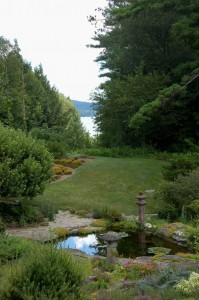 Series of Ponds Feeding the Rock Garden
Series of Ponds Feeding the Rock Garden
The water from the zero-gravity system flows into a series of ponds that lead to the woods. The faucets near the water gardens keep the ponds fed.
Clarence started the Heather Bed in 1931 and survived many decades until 2005 when three days of an intense cold followed by three days of 90 degree temperatures killed 95% of the bed. It was replaced in 2007-2008 with 20 varieties of heather with generous help from the Morton Foundation and volunteer assistance from the Northeast Heather Society.
The Rhododendron Walk
The Rhododendron Walk was created in 1920 and provides a nice height transition from the woods to the gardens. The rhododendrons are the original ones that Clarence planted and have white or pink blossoms. He transplanted them from the woods to the estate.
Honeymoon Cottage
The Rhododendron Walk leads to the Honeymoon Cottage, which was built in 1914. At that time, John and Clara were still living in the main house and Alice did not want to live with her in-laws. Just as the house was being finished, however, Clara died and Clarence and Alice moved into the main house anyway. Guests were allowed to stay in the cottage, but it fell into disrepair over the years and has been closed to the public. But Joe Thompson, who is the current landscape director at the Fells and with whom I spoke, said he’s spearheading the renovation of the Honeymoon Cottage that he hopes will be done in a year or two. It’s one of several improvement and restoration projects he has planned for the estate. However, one of the difficulties in getting these projects done is finding volunteers because of the Fells’ remote location.
Teddy Roosevelt
Yes, Teddy Roosevelt slept here and they have his bedroom in the main house just as it was when he was there (or close to it). Apparently, wherever he visited and it was suitable, he would plant a tree. In the case of the Fells, it was a sugar maple.
Ghost Stories
Stories about the ghosts at the Fells main house have circulated for years. Each person who comes to reside at the house during the summer can often recount their own paranormal experiences. The stories seem to center around the servants who worked there and members of the family, Alice in particular. College interns who come for the summer have their own tales.
The intern who led the garden tour, Austin, is from Iowa State University and is studying horticulture. He and the other interns live in what was the once the servants quarters. Apparently, they can often hear the sounds of someone sweeping. Also, Alice liked to play the piano and would haunt that area. Austin was playing her piano one evening when he distinctly felt a presence sitting next to him. In fact, the air around the piano area was noticeably colder and warmed as soon as he started walking back to to the servants area. Alice and Clarence often sat together as she played. While Austin played, the piano bench actually moved!
The nice thing about having interns lead tours each summer is they bring their own impressions of the Fells including ghost stories. So the tours will vary according to who is leading the tour.
About Alice
Alice was a strong-willed person. She was exacting but fair with servants and really expected things to happen in a timely manner, even in war time. During World War II, she had ordered a vase from Europe. Unfortunately, the boat it was on was torpedoed. Amazingly, the vase eventually washed ashore in England. It was recovered and sent to Alice. She was upset, nonetheless, because it was late!
Tours and Events
While the garden tours ended for the season on August 11th, the house tours, which are conducted Wednesday through Sunday, continue until September 1st; after that the house is only open on weekends, with for tours continuing until October 14th. Currently, in the main house there is an exhibit about the special relationship between Lincoln and John Hay, which includes historical images, records, and objects.
I highly recommend going as the house tours provide interesting historical facts and stories about the estate and the family. The gardens are also open to the public and there is staff on hand to answer questions. There are also seasonal events, such as:
Calling All Cameras: Autumn Ramble
Saturday, September 21, 10am-noon (Rain cancels)
Photograph the autumn faces of The Fells along woods trails, open fields, gardens and lakeshore. Discover trees and shrubs with the brightest foliage, including wild plum, blueberry and black gum. Co-led by Tammis Coffin, Coordinator, John Hay Ecology Center and Larry Harper of Portrait Design Photography. Designed for outdoor lovers of all ages who are passionate about photography and want to contribute seasonal photographs of The Fells for use in our publications. Fells Members free, nonmembers pay site admission. No registration required. Meets at The Fells Welcome Kiosk. Made possible with support from the Creekmore and Adele Faith Charitable Foundation.
Holiday House Tour
Saturday-Sunday, December 7-8, 10am-3pm
Tour six fabulous residences all decked out for the holidays in the picturesque town of New London, NH and get inspired! We have selected the crème de la crème of private homes for our 2013 Holiday House Tour. You will be thrilled with each and every one—from architecture to décor, young to antique, we promise you will be awestruck. The distinctive individuality of each home, music of the season, the scent of freshly cut pine boughs and twinkle of lights makes for a most unforgettable tour. Open for touring over two days, December 7-8, proceeds from this popular fundraiser benefit the beautiful Fells gardens. Advance tickets $20, through 5pm December 6, available online, at select retailers and at The Fells. Tickets day of tour $25—at Tour Headquarters—where you can shop our Holiday Boutique, brimming with unique one-of-a-kind gifts from the finest local artisans.




